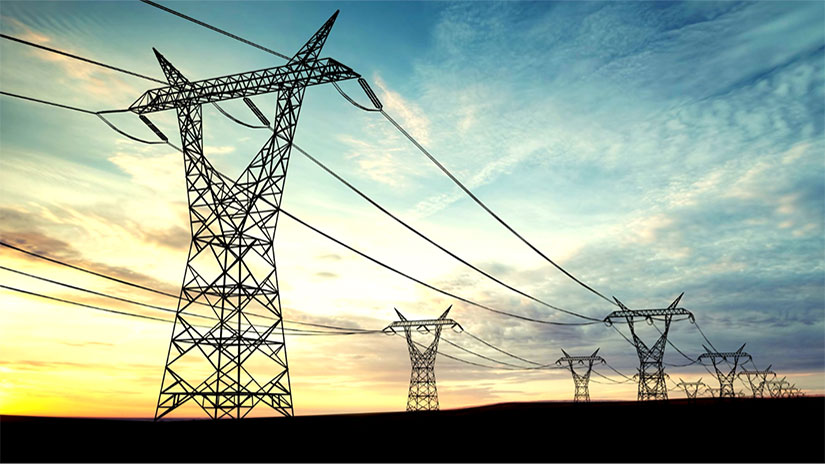National Transmission Planning Study
The National Transmission Planning Study (NTP Study) sought to understand strategies to ensure the U.S. transmission system continues to reliably serve the nation's electricity customers.

The NTP Study was led by the U.S. Department of Energy’s Grid Deployment Office and conducted in partnership with NLR and Pacific Northwest National Laboratory. The study aimed to better understand the scope of interregional transmission needs for a changing power sector.
During the study (2022–2024), the team conducted extensive stakeholder engagement and developed a novel approach that links long- and short-term power systems models. Additionally, the team developed national grid-scale planning tools and practices necessary to address those interregional transmission needs. The NTP Study, including six chapters and an executive summary, was released in October 2024.
Read the National Transmission Planning Study.
Transmission Scenarios
The NTP Study modeled and analyzed nearly 100 future transmission scenarios with a range of economic, reliability, and resilience conditions. These transmission options are not typically considered in current planning practices and can inform future planning processes. View one of the scenarios below and click to access all the scenarios. Analysis of the transmission scenarios can be found in the NTP Study's Chapter 2: Long-Term U.S. Planning Scenarios.
To download the data, visit the National Transmission Planning Study OpenEI page. If you have trouble accessing the data, contact Anne Hamilton.
Interregional Renewable Energy Zones
As part of the NTP Study, NLR conducted other analyses and developed tools that led to additional interregional planning studies, reports, and white papers. That includes two NLR technical reports on interregional renewable energy zones and barriers and opportunities for interregional transmission (listed below).
NLR studied the economics of long-distance, high-voltage transmission lines that are anchored to interregional renewable energy zones, or areas with very high concentrations of the lowest-cost developable renewable energy potential. The report, Interregional Renewable Energy Zones, seeks to:
Bridge the Gap: The analysis acts as a bridge between the technical modeling in the NTP Study's national transmission scenarios and the practical decision-making processes at the state and regional levels. By aligning with national results, an interregional renewable energy zones corridor becomes a tangible example of achieving the benefits outlined in the national analysis.
Inform State Decision-Making: The study offers a preliminary analysis to assist state decision makers in determining whether to delve into more detailed examinations of relevant interregional renewable energy zones corridors. While this report may not encompass all case-specific details influencing transmission projects, it provides a foundation. If a corridor examined here showcases a high benefit-to-cost ratio primarily based on energy cost savings, further studies can expand the economic analysis to include local factors.
Barriers and Opportunities for Interregional Transmission
NLR examined issues that prevent existing transmission facilities from delivering maximum potential value and developed a suite of options that power system stakeholders can pursue to overcome those challenges. The report, Barriers and Opportunities to Realize the System Value of Interregional Transmission, groups barriers and opportunities for interregional transmission among all regions, between non-market or a mix of market and non-market areas, and between market areas.
NLR also identified transformative actions that could be applied to all regions to increase the value of interregional transmission. Together, the suite of strategies can help improve the efficiency and efficacy of today's transmission system, increase grid reliability, and lead to cost savings that are then passed onto customers.
Planning and Development Pathways for Interregional Transmission
Despite the potential for significant benefits of interregional transmission, there are a variety of barriers to developing these types of transmission projects in the United States. As part of the NTP Study, NLR and Pacific Northwest National Laboratory conducted a qualitative assessment of obstacles to interregional transmission, a high-level survey of potential opportunities to overcome those challenges, and which system actors or organizations are best equipped to lead each solution.
The authors interviewed transmission system experts, planners, and developers in the United States; reviewed literature; and reviewed comments from Federal Energy Regulatory Commission proceedings to understand the institutional and regulatory challenges to developing interregional transmission in the United States.
The report, Planning and Development Pathways to Interregional Transmission, provides state and federal decision makers, transmission planners, and other industry players who are interested in promoting new development of interregional transmission lines with potential opportunities to move toward unlocking the wide range of benefits highlighted in the NTP Study.
Learn more about the National Transmission Planning Study in a new Lab Notes episode of The NLR Podcast
In the News
NLR's contributions to the NTP Study are featured in the news. Read some of the recent articles and publications that highlight the study.
Planning and Development Pathways for Building Interregional Transmission, NLR News (2025)
National Transmission Analysis Maps the Next Chapter of U.S. Grid Evolution, NLR News (2024)
A Look at the Future of Transmission: Getting Clean Electrons to Where They Need To Be, NLR News (2024)
How to Realize the Maximum Value of Interregional Transmission, NLR News (2024)
Can We Connect Renewable Energy Hubs With Electricity Consumption Hubs? NLR News (2024)
Analysis Details Scenarios for Interregional Renewable Energy Zones, American Public Power Association (2024)
Contact
Share
Last Updated Dec. 30, 2025
